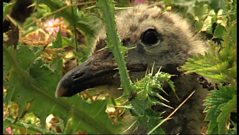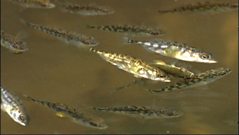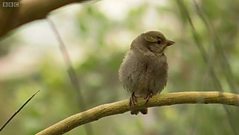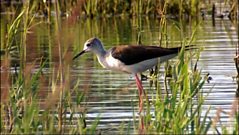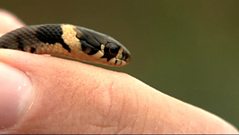
Coll's corncrakes
Researchers work out the best time to mow the meadows safely.
For 11 years Reese has been travelling to Coll to count corncrakes - using tape recordings of tractor noises and some plastic piping. The conservation programme has been a real success. A decade ago corncrakes were nearly extinct in Scotland. Sanjida O'Connell joins him to find out about his odd methods. When the corncrakes hear the noise of the tractor and piping slashing at the grass, they run away and Reese can trap them in fences he's put at the end of the field. He's Britain's leading corncrake expert and was attracted to study them because they are a bird with a very interesting biology and had a rapidly declining population. So his work has been to try and reverse that trend. Sanjida and Reese go to ring the 15 corncrakes he's caught already. The project needs to work out their hatching dates, so that accurate delays to mowing dates can be predicted, so mowing doesn't kill corncrake chicks or destroy their nests. One chick is 10 to 12 days old and already independent of its mother. Another chick is much bigger than the rest - it is probably the dominant one in the brood and would get most of the food from the mother. Coll is a real stronghold for corncrakes, so is a good place for birdwatchers to come and see them.
Duration:
This clip is from
More clips from Summer: Islands
-
![]()
Gull colony
Duration: 04:30
-
![]()
Natterjack top spot
Duration: 02:01
-
![]()
Hebridean delight
Duration: 01:29
-
![]()
Dunes and geraniums
Duration: 01:31
More clips from Nature's Calendar
-
![]()
Bizarre behaviour—Series 1, Summer: Parks and Gardens
Duration: 01:27
-
![]()
Hot-housing sparrows—Series 1, Summer: Parks and Gardens
Duration: 01:42
-
![]()
Long-legged lovelies—Series 1, Summer: Wetland
Duration: 02:38
-
![]()
Young grass snake—Series 1, Summer: Parks and Gardens
Duration: 01:30

